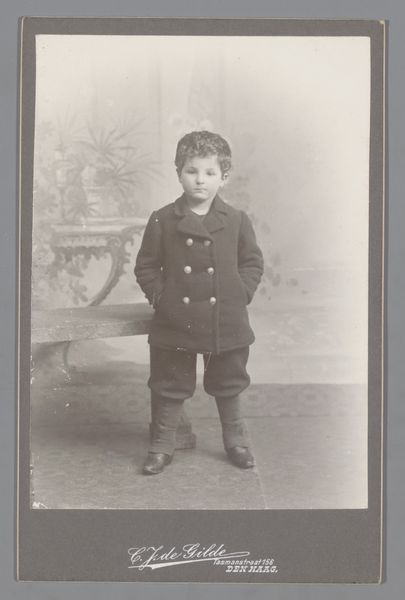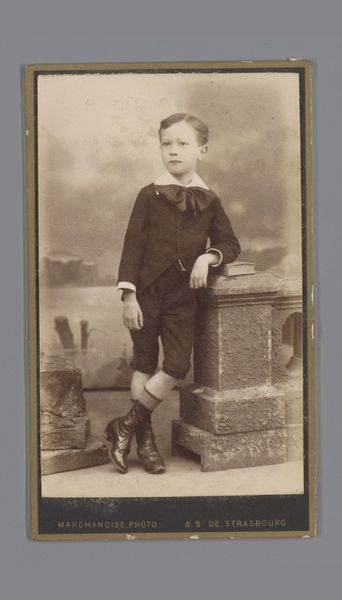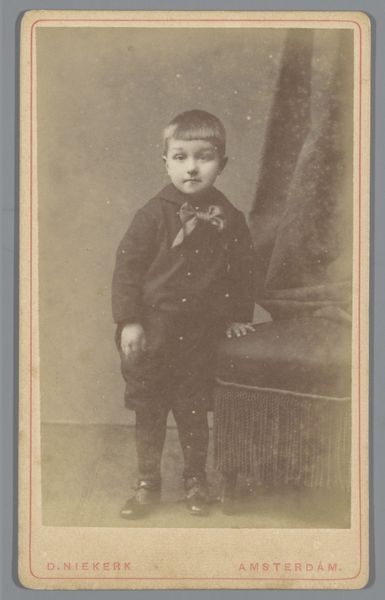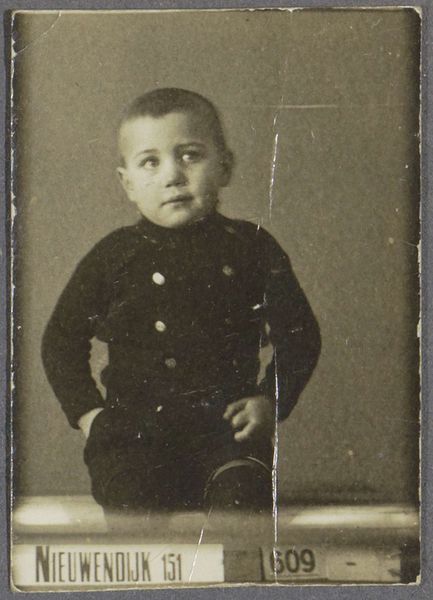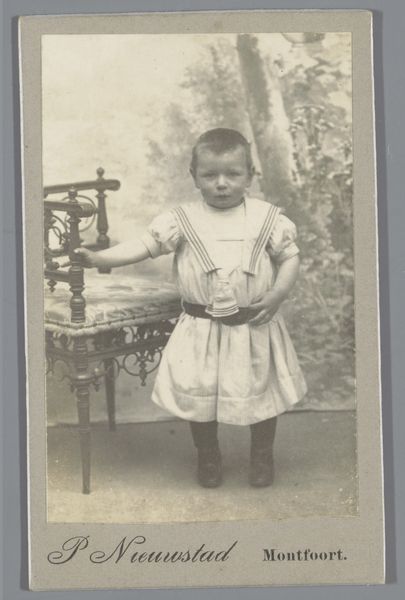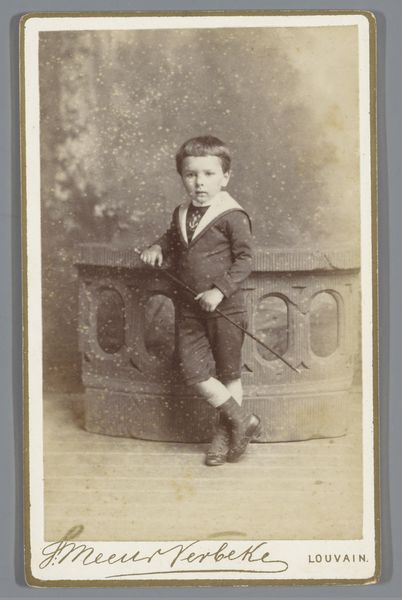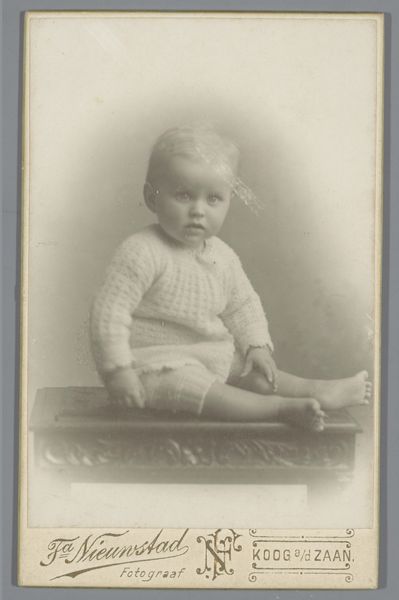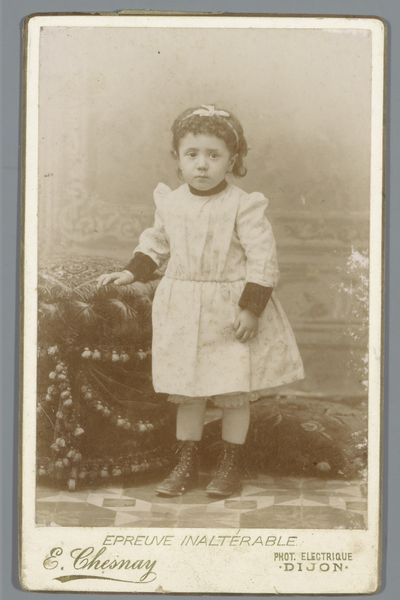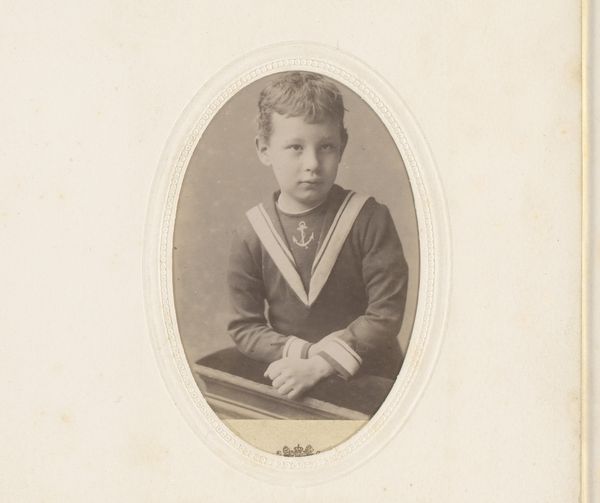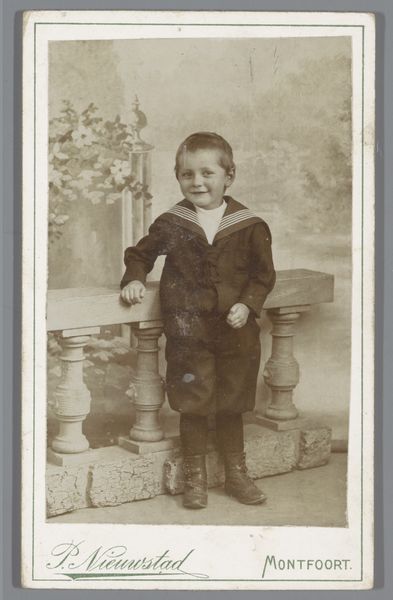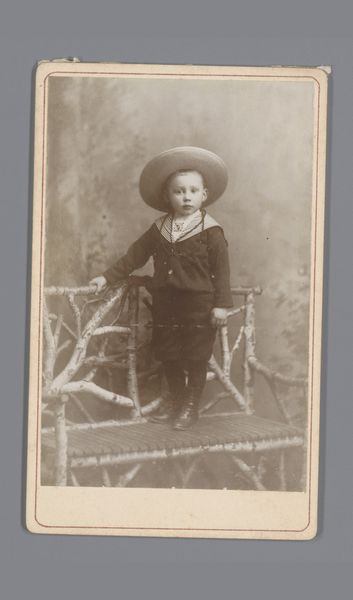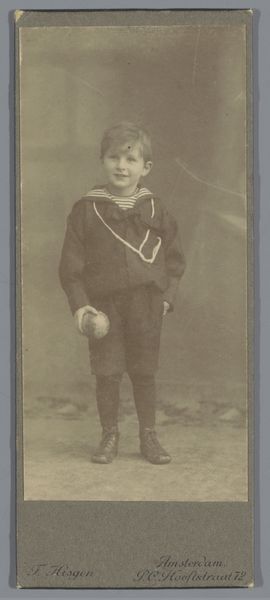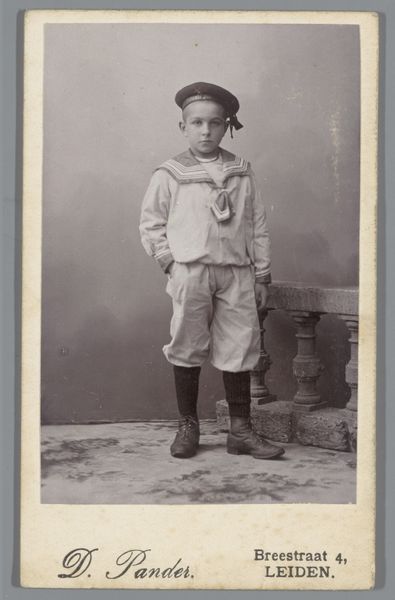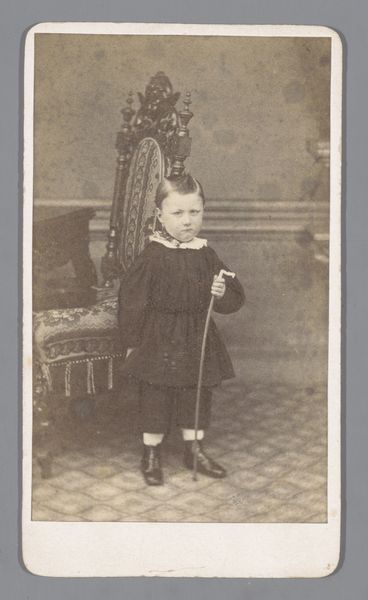
photography, gelatin-silver-print
#
portrait
#
photography
#
gelatin-silver-print
Dimensions: height 105 mm, width 64 mm
Copyright: Rijks Museum: Open Domain
Curator: This gelatin silver print, attributed to the London Portrait Company and titled "Portret van een onbekende jongen"—"Portrait of an Unknown Boy"—captures a young boy, likely between 1900 and 1914. It strikes me as rather formal. Editor: There’s a stillness, a reserve to this image. The dark clothing and simple backdrop create a solemn mood, despite the youth of the subject. What strikes me is how heavily class plays a role, with such formal dress and serious posing of this young boy indicating both social class and expectations of comportment in a post-Victorian setting. Curator: It's interesting to consider the studio portrait in the context of social history. These kinds of portraits, especially at the turn of the century, were ways families presented themselves. The presence of the London Portrait Company's name imprinted at the bottom gives the sense of mass production and how integral to bourgeois culture photographic portraits had become. The image normalises a specific model of masculinity and childhood. Editor: Exactly, we have to think of this image through the lens of the dominant patriarchal narratives. The boy is positioned as a subject being observed. Look at the slight anxiety in his expression – the hands behind his back betray an obedience that's been drilled into him. How might feminist theory unpack such depictions of young boys navigating these performance of expectations and societal constraints on their gender? The child mirrors how colonial narratives expect similar formal representations. Curator: It makes one think about the labour involved. What did it mean for a child, most likely from the middle or aspiring middle class, to participate in the process? These institutions were shaping public taste as much as reflecting it, the composition being very formal and classical. Editor: Absolutely, art becomes both product and agent within this complex intersection of socio-economic factors. The composition mirrors painting with photography imitating art's conventions as the newer medium strives for legitimacy. This extends notions of racial representation because portraits, as a genre, help normalize particular modes of representing and thus "knowing" another. What is the work reproducing about access, authority, and who holds both? Curator: In short, this portrait, with its details, embodies more than just a young boy. It represents the evolving social dynamics and photographic trends in an era of industrial and imperial expansion. Editor: Right, considering how these portrait studios disseminated values while generating their production illustrates how capitalist imperatives affect representation within a broader network of social influences that include family, race and childhood, etc.
Comments
No comments
Be the first to comment and join the conversation on the ultimate creative platform.
